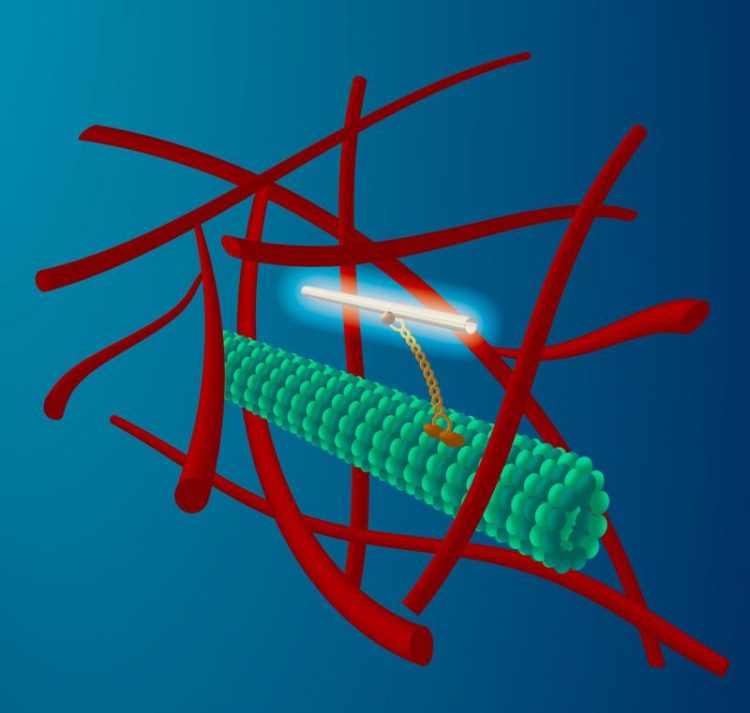Göttingen scientists discover new biological transport mechanism in cells

An international team of scientists led by the University of Göttingen has discovered a new biological transport mechanism in cells. Foto: M. Leunissen, Dutch Data Design
An international team of scientists led by the University of Göttingen has discovered a new biological transport mechanism in cells. The researchers from the Faculty of Physics, Vrije Universiteit Amsterdam and Rice University in Houston developed and applied a new method to visualize and track single molecules inside living cells and whole organisms.
They found out that cells use the same motor proteins that serve in muscle contraction to vigorously and actively stir their interior. The results were published in the journal Science.
For long-distance transport cells usually employ motor proteins that are tied to lipid vesicles, the cell’s ‘cargo containers’. An example is the transport of proteins along the long axons of nerve cells.
This process involves considerable logistics: cargo, such as proteins synthesized elsewhere in the cell, needs to packed, attached to motor proteins and sent off in the right direction. By utilizing extremely thin nanotubes serving as beacons of light, the scientists now found that cells also use a much simpler and more economical mechanism to facilitate local transport in their crowded interior.
“Much in the way a chemist would accelerate a reaction by shaking a test tube, cells stir their cytoskeleton,“ explains the leader of the study, Prof. Dr. Christoph Schmidt of Göttingen University’s Third Institute of Physics. “This activity results in a global internal stirring of the cell.“ The new discovery not only promotes the understanding of cell dynamics, but also points to interesting possibilities in designing active technical materials.
Original publication: Nikta Fakhri et al. High resolution mapping of intracellular fluctuations using carbon nanotubes. Science 2014. Doi: 10.1126/science.1250170.
Contact:
Prof. Dr. Christoph Schmidt
Georg-August University Göttingen
Faculty of Physics – Third Institute of Physics
Friedrich-Hund-Platz 1, 37077 Göttingen, Germany
Phone +49 551 39-7740
Email: christoph.schmidt@phys.uni-goettingen.de
http://www.uni-goettingen.de/en/3240.html?cid=4802 more photos
http://www.dpi.physik.uni-goettingen.de/en/science/people/211r125.html
Media Contact
All latest news from the category: Life Sciences and Chemistry
Articles and reports from the Life Sciences and chemistry area deal with applied and basic research into modern biology, chemistry and human medicine.
Valuable information can be found on a range of life sciences fields including bacteriology, biochemistry, bionics, bioinformatics, biophysics, biotechnology, genetics, geobotany, human biology, marine biology, microbiology, molecular biology, cellular biology, zoology, bioinorganic chemistry, microchemistry and environmental chemistry.
Newest articles

High-energy-density aqueous battery based on halogen multi-electron transfer
Traditional non-aqueous lithium-ion batteries have a high energy density, but their safety is compromised due to the flammable organic electrolytes they utilize. Aqueous batteries use water as the solvent for…

First-ever combined heart pump and pig kidney transplant
…gives new hope to patient with terminal illness. Surgeons at NYU Langone Health performed the first-ever combined mechanical heart pump and gene-edited pig kidney transplant surgery in a 54-year-old woman…

Biophysics: Testing how well biomarkers work
LMU researchers have developed a method to determine how reliably target proteins can be labeled using super-resolution fluorescence microscopy. Modern microscopy techniques make it possible to examine the inner workings…





















